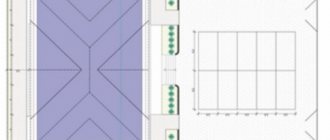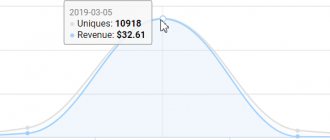Opening your own confectionery shop, with the right approach, can be quite successful. The payback, according to experts, depends on the size of the initial investment and cross-country ability. A high-traffic retail outlet can reach self-sufficiency from the second month of operation. And if this is a residential area, then from 6 months of the store’s operation. Despite this, the entrance fee to business is growing from year to year. This is explained primarily by increasing competition in this market. People now care not only about the product itself, but also about how it is presented, what the service is like, and how they communicate with them. All this forces business organizers to look for new approaches to building a successful business...
How much money do you need to open a candy store?
Investments in opening a candy store can vary dramatically, depending on a number of factors: location, presence of competition, condition of the premises, size of the outlet, and so on. However, experts advise starting from an amount of 400 thousand rubles, no less. First of all, you will have to invest in: purchasing commercial equipment - from 40 thousand rubles, creating an assortment - from 150 thousand rubles. (here you can save by agreeing with suppliers on a deferred payment), rental deposit - from 50 thousand rubles, advertising - from 30 thousand rubles. Depending on the condition of the premises, investments in repairs may be required. Plus, it is advisable to set aside some of the funds as a reserve - in the first months of operation, the confectionery shop will not generate income capable of covering costs, and you need to take funds somewhere to pay salaries and rent.
We also advise you to study the article: “How to open a culinary store“
Equipment
Purchasing equipment is an important part of the preparatory process for starting a business. There is a large supply of new and used confectionery equipment on the market, both foreign and domestic. Domestic equipment is cheaper, but the quality is comparable to foreign equipment. Experts recommend buying new equipment, since it is under warranty and will fully justify its price within 3 years. Below is an approximate list of equipment for a confectionery at home and a list of equipment for a small cafe with a confectionery shop. Equipment that may be needed to organize a pastry shop at home:
- oven;
- mixer;
- blender;
- juicer;
- deep fryer;
- device for cooking chocolate;
- cream injector;
- a large refrigerator (it is recommended to purchase a separate one and not store food in it for your own consumption);
- Bakeware;
- all kinds of kitchen utensils (2 - 3 round baking dishes, a couple of large rectangular forms, dough knives, etc.);
- scales.
Equipment needed to organize a small cafe with a pastry shop:
- electric stove with four burners,
- combi oven,
- convection oven;
- flour sifter;
- beater;
- proofing chamber;
- dough mixer;
- mixers.
- dough sheeter;
- freezers and refrigerators;
- pastry guns and attachments for them;
- meat grinders and cleaning machines;
- confectionery and bakery cabinets and ovens.
- refrigeration cabinets and units,
- production tables (for decorating confectionery products);
- mobile tables or racks (for transferring finished products to packaging or forwarding);
- kettle, coffee machine and microwave;
- confectionery showcase (in a cafe to demonstrate products);
- other equipment (racks, pallets, carts, molds, tables, scales, pots, ladles, baking sheets, kitchen knives, etc.).
Special spatulas allow you not to lose up to 10% of the dough or cream each time you transfer from one dish to another. It is also necessary to purchase an ordinary household washing machine and office equipment for running a business (PC, MFP, cash register).
Choosing a room
When choosing a location for a confectionery shop, experts advise following the so-called “carnival” paths. First of all, we are talking about regional public transport stops. In such places the revenue is very good.
The area of the retail outlet must be at least 50 m2, plus 15-20 m2 is allocated for storage of goods. A large area is necessary primarily for visual display of confectionery products. For example, one cell in a display case with packaged cookies is about 30 cm wide. There are 30-40 types of cookies in total. So consider it. The same goes for candies, of which there can be over 100 types. That's why large areas are needed.
Renting a premises of this size will cost 70-100 thousand rubles monthly.
Which taxation system to choose for a confectionery shop
The legal form of a confectionery shop can be either an individual entrepreneur or an LLC. Read about the pros and cons of both OPFs in the article on our website: Individual Entrepreneur or LLC. However, the easiest way is to register an individual entrepreneurship (IP). Especially if the business is organized by one person. It’s simpler, cheaper, and requires much less paperwork. But if there are several organizers, then you cannot do without a legal entity, that is, an LLC.
As a taxation system for a confectionery shop, it is most profitable to use UTII - a single tax on imputed income. First of all, this will relieve the entrepreneur from the responsibility of installing and maintaining a cash register. In addition, UTII is the most favorable tax regime when the tax is paid based on the area of the retail facility. And that is not all. UTII will eliminate the obligation to submit quarterly reports (as is the case with the simplified tax system), pay income tax, property tax and VAT. The transition to this regime is carried out immediately after registering the activity with the tax service.
Current trends
In Russia, 260 billion rubles worth of bread and other flour products are consumed annually. At the same time, the quality of bread often leaves much to be desired, so the consumer is willing to pay for rich and tasty baked goods. It can only be offered by a private confectionery-bakery. Large plants cannot 100% meet market needs in this regard.
In European countries, this niche has long been filled with mini confectionery bakeries combined with small shops or cozy cafes. In Russia, this concept is just gaining momentum, so the level of competition is not so high. Especially if you open such a business in a small town. Megacities are less attractive in this regard.
You can also open your own bakery at home or use franchises to reduce your startup investment. To achieve success, the main thing is to provide quality to the consumer, and the choice of business concept depends on the entrepreneur himself, his financial capabilities and plans for its development.
We form an assortment
Next, you need to resolve the issue with suppliers and formulate an assortment of confectionery products. Many novice entrepreneurs ask themselves: what assortment is optimal for a confectionery shop? There is no clear answer to this question. Much depends on where the store is located, what kind of crowd the outlet is designed for, etc. On specialized forums about trade, some practitioners argue as follows: in areas with a wealthy population, many people are on a diet and selling candies and cookies in such places is unprofitable. In general, it is difficult to develop a confectionery business in rich areas. And in less wealthy places, on the contrary, no one is particularly interested in the timing, manufacturer, freshness of the goods, etc. It is much easier to promote a store in such places.
Be that as it may, without the proper assortment, profitable trading cannot be achieved. What should be in the first place: cookies - at least 30 types, chocolate candies - from 80 types, caramel - from 30 types, cakes and pastries - from 15 types, pastries, other sweets - Turkish delight, sea pebbles, halva, sherbet. A separate display case is completely dedicated to chocolate and lollipops. You can select a display case for diabetics. Also, don’t forget about related products such as tea, coffee, honey. The assortment itself must be constantly updated, since the same product quickly becomes boring, which affects the fall in revenue.
The markup on goods is on average 25-30%. The main thing is to find profitable suppliers, otherwise it will be extremely difficult to compete with retail chains.
Signboard
A person is greeted by his clothes, and an establishment is recognized by its sign. And the first requirement for her is to be noticeable. This means that she must:
- be done in large, bright font so that it can be read even at a distance;
- be visible from different sides and not be blocked by trees and other buildings (for a confectionery shop in a shopping center - not blocked by internal structures);
- have a backlight that prevents you from getting lost in the dark.
The second requirement for a sign is to accurately inform the buyer what awaits him here. This means that in addition to the name, a few words about the product should be placed on the sign/lightbox. What do you specialize in? On pastries and cakes or on buns and pies? On Italian desserts or oriental sweets? Point it out.
Signs should be posted throughout the area to indicate how to find your establishment. If you are located in a separate building, use a billboard on the road, a sign on a pole with road signs, a clamshell stand on the sidewalk, etc. If you are in a shopping center, then use banners above the escalators, luminous arrows on the walls, drawn traces on stairs, etc.
Recruitment
The ideal portrait of a confectionery shop seller is a woman between 25 and 55 years old, sociable and friendly in nature. The appearance of sellers is also of enormous importance. Soiled aprons and an unkempt appearance will clearly not bring income to retail outlets. Experience is also important, although finding such workers is not easy.
In total, at least two sellers are required per point. In general, experts advise the organizer to personally act as a salesperson for some time (which is what happens in most cases). This will make it easier to study the entire “kitchen” and understand what to ask of employees in the future.
Do not forget that according to the law, every seller of food products must have a medical book on hand. Otherwise, any unscheduled inspection is a disaster.
Required documents, permits
To open a small confectionery bakery from scratch, you need to obtain many permits:
- Sanitary and epidemiological permit for production. The requirements for the premises will be discussed below.
- Conclusion of the SES, necessary for working with third-party organizations - shops, supermarkets.
- An environmental assessment must be carried out.
- Fire inspection permit. To obtain it, the premises where the bakery-confectionery is located must meet regulatory industry requirements. The main ones are: the presence of a fire alarm and primary fire extinguishing means - fire extinguishers.
- Certificate of conformity of the Federal Agency for Technical Regulation and Metrology.
You may be interested in: What is vending trade and how to make money from it?
The first step to opening a bakery will be obtaining permission from Rospotrebnadzor and registering the LLC under the simplified taxation system (STS). This will significantly expand the entrepreneur’s opportunities in terms of commercial activities and provide greater freedom for further development.
Opening a bakery will require the correct selection of the OKVED code:
15.81 – “Production of bread and flour confectionery products for short-term storage.”
To obtain permits and prepare documents, 60,000 rubles should be included in the project budget. It can be argued that everything is done for free, in accordance with the law, but you should not hope for all permits and certificates to be issued at once.
Store opening
In the confectionery business, as in many other types of business, there is seasonality. A serious decline in sales is observed in the summer, and products quickly deteriorate. Many stores are cutting back on their assortment (cakes, sweets, chocolates) and reducing inventory. An increase in trade is observed in the fall, and especially in the days before New Year. It is during this period that, ideally, you should plan to open a confectionery shop. In this case, you can recoup the lion’s share of the funds spent on opening a store and quickly recoup your business investment.
After opening a confectionery shop, it is necessary to notify the local branch of Rospotrebnadzor (SES) about the start of the store’s activities.
Promotion and sales of finished products
The most effective method of promotion is word of mouth. But it can only be used some time after the start of production. Until this point, you can resort to the following advertising methods:
- sign making;
- installation of a pillar;
- sales of products through grocery stores and retail chains (partners will help make the product popular among the population).
As for sales of finished products, you can work in the following directions (the final list of buyers will depend on the type of confectionery):
- grocery stores;
- candy stores;
- supermarkets;
- cafes and restaurants;
- ordinary citizens.
Business opening technology
The technology for opening a confectionery shop is simple: after conducting a market analysis and drawing up a business plan, you can immediately begin obtaining permits. You will also need to rent a room and carry out repair work. Installing equipment and purchasing products will not take much time. It is very important to find wholesale suppliers who are willing to pay in installments. The advertisement is engine of the trade. Therefore, it should be given special importance. Neatness, cleanliness and fresh products will make the shop in demand and popular during the first month of activity.
( 6 ratings, average: 3.00 out of 5)
Loading…
Similar business ideas:
- TOP 30 business ideas without investment
- How to make money renting a car as a taxi: the most...
- Chatbot marketing: is it possible to get a good income...
- TOP 30 business ideas with minimal investment
Start
After graduating from the Faculty of Art and Graphics in Nizhny Tagil, I moved to Moscow and began to engage in graphic design and branding. Later she began to manage teams: she was both a project manager and an art director. My team has always included illustrators and web designers.
At some point I got a little tired of the business itself. I wanted to create, to do something with my soul. I thought for a long time in what area I could realize this. Before Baker-Maker, I received a management MBA, so I could run any business.
Decorated cakes have always aroused my wild interest; I didn’t understand how you could make a cake, for example, in the shape of a car. I thought why not try it myself. The only thing that stopped me was that I was an artist, not a pastry chef. And I suggested to my friends that they start such an interesting project. One of them was just interested in home baking and agreed to help. My other friend Masha, who later became my main business partner, also supported me.
I decided to gain experience and became a “free employee of the month” in several Moscow confectionery shops. I sent my resume there, hiding my experience and simply writing that I was a decorator. I wrote down everything for everyone: how much mastic it took to make the parts, how long it took to prepare the base for the cake.
Then I realized that many confectionery directors are not at all aware of the process itself. They don't even know how long it takes their pastry chef to make a cake. When the order arrives, they don't realize how complex it is. For example, they take on too many orders, resulting in failure because the decorator does not have enough time to complete the order. Or, conversely, the whole team stretches the deadline and asks for two more days, but in reality they just sit and drink tea. If the director had worked with his employees in the kitchen for at least a week, there would have been much more orders.
I baked my first cake in the shape of the head of Bender, the robot from the animated series Futurama, invited my friends for tea, and then we announced that we were making cakes. Our friend made the first order - he asked us to bake a cake for his mother’s birthday. This is how word of mouth started working, and after three months we no longer knew the people who place orders with us.
We were worried that we lacked experience and could not predict how the filling would behave or whether we would like the taste. We are not professionals, so at first we could not work out all the recipes and constantly maintain quality. Everything came with experience, when we decided that we needed to make technical maps and calculate everything. We couldn’t tell the client: “Sorry, our biscuit didn’t rise.”
My own investment in the business amounted to 40,000 rubles. I bought all kinds of mastic, rolling pins, mats, tools. All this paid off quite quickly: after three months the project began to break even, then we were already making a profit and were able to save money. Gradually we saved up for training in England and for a new mixer.











